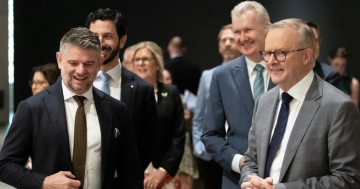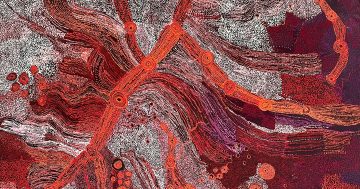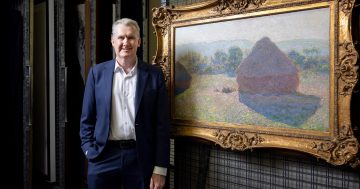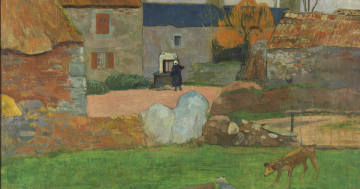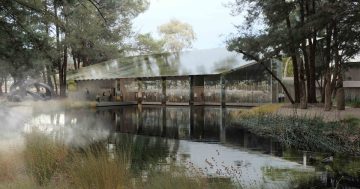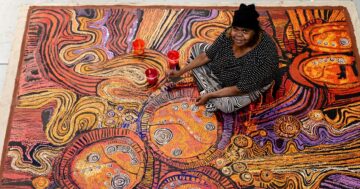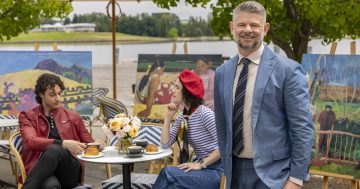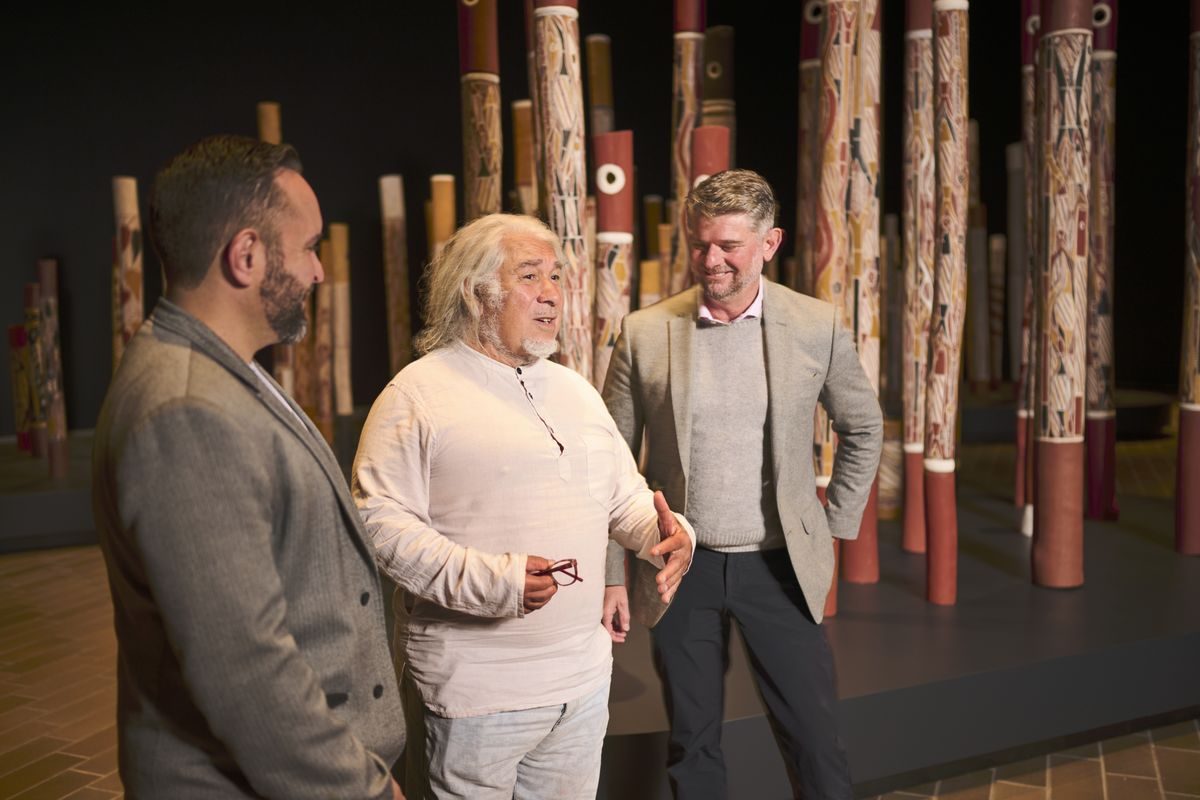
NGA Assistant Director, First Nations Engagement Bruce Johnson-McLean, Wierdi | Birri Gubba people, Bandjalung artist and curator Djon Mundine and National Gallery Director Nick Mitzevich at the Aboriginal Memorial. Photo: NGA.
The Aboriginal Memorial at the National Gallery of Australia has been relocated to a more prominent position so all visitors to the NGA can experience the installation commemorating First Nations people who lost their lives defending their land since European colonisation.
The move from its former ground floor site at the right of the Main Entrance to the more central position at Gallery 9 on Level 1 comes after three years of planning and community consultation and ahead of the National Gallery’s 40th anniversary in October.
It is the first stage of a revitalisation project that will also include a major publication in 2023 and an ongoing program of public and educational activity.
Commissioned by the National Gallery’s inaugural director James Mollison before the Australian Bicentenary in 1988, The Aboriginal Memorial is an installation of 200 hollow log coffins from Central Arnhem Land.
It was launched at the 1988 Sydney Biennale before moving to the National Gallery later that year.
The concept was the brainchild of renowned Bandjalung artist and curator Djon Mundine, who worked with 43 artists from nine clan groups from Ramingining and surrounding communities.
He found it disturbing that despite memorials dotted across Australia in most cities, towns and villages commemorating those who died defending their country, there were no memorials for Aboriginal people who had done likewise since 1788.
“An enormous crime has been committed and is remembered here,” Mr Mundine said.
“All artworks are memorials, mnemonic devices; however, this artwork speaks to a wider social consciousness and a need to be grieving if nationally we are to grow as an adult society and nation.
“The work contains within it an alternate cosmology of how we First Australians have lived and can live within this environment and be spiritually inspired to imagine a better future.”
NGA Assistant Director First Nations Engagement Bruce Johnson McLean said The Aboriginal Memorial remained as central to the mission of the National Gallery today as when it was conceived in the 1980s.
“It was a defining exhibition for Australian visual culture – it compelled many to view the world through the eyes of First Nations people for the first time,” he said.
“As custodians of The Aboriginal Memorial, we are charged with keeping the spirit of this work alive, of keeping the memories and legacies of those who have gone before alive. We are committed to keeping this an active memorial space long into the future.”
National Gallery Director Nick Mitzevich said the installation was one of the nation’s most important cultural works.
“It has been heartening to work closely with the community over the past three years to ensure the work is presented at the heart of the Gallery,” he said.
The original creators wanted the memorial to remain in a public space and be preserved for future generations.
Garrawurra artist Frances Rrikili, who created a memorial pole adorned with conch shells, said the installation showed that Aboriginal culture was still alive.
“Yolngu people put the bones into these, and they are left on Country. These all have different stories from different clan families. They have ancient stories on them about traditional ways of life,” she said.
“For me, this installation keeps what we have, it is our identity in these hollow logs. They show who we are, where we are from and what our ancestors did. This has been passed down to us and it is still going. Our culture is alive.”
Local Ngambri and Ngunnawal Custodians will join with members of the Ramingining community and Djon Mundine to sing in the Memorial in its new location tomorrow (1 June) from 10:30 am to 11:30 am.
The ceremonial singing in is open to the public as part of the National Gallery’s Reconciliation Week programs and will commence outside the Main Entry and move to Gallery 9, Level 1.












